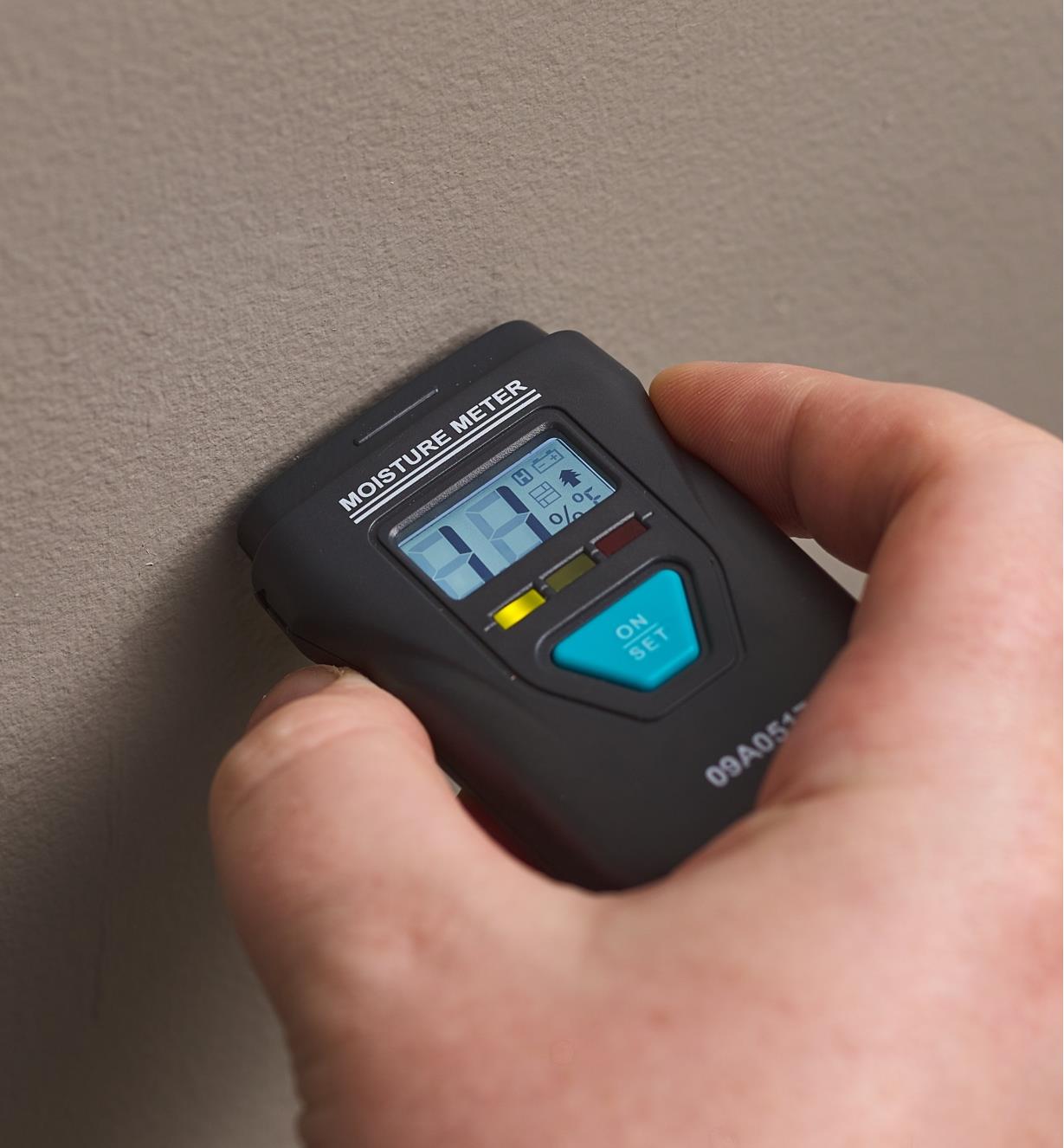Exactly How a Moisture Meter Can Improve Your Building And Construction Jobs and Prevent Damage
Exactly How a Moisture Meter Can Improve Your Building And Construction Jobs and Prevent Damage
Blog Article
Explore the Globe of Moisture Meters: Everything You Required to Know
In the realm of moisture meters exists a world of accuracy and functionality that typically goes unnoticed. These devices, while apparently uncomplicated, hold a riches of details that can considerably affect numerous markets and applications. Recognizing how moisture meters operate, the various types offered, and their varied uses can clarify their significance in ensuring top quality and efficiency. By exploring the details of moisture meters, one can reveal a valuable device that goes beyond mere dimension, offering insights that can make a substantial distinction in various fields.
Just How Moisture Meters Work
Moisture meters operate by gauging the electrical conductivity or capacitance of materials to determine the moisture web content existing. These meters are indispensable devices across numerous sectors, consisting of agriculture, building, and woodworking. By using various methods such as pin-type or pinless modern technology, wetness meters offer accurate analyses that help professionals make notified choices.
Pin-type moisture meters work by placing the sharp pins into the material being examined. On the various other hand, pinless dampness meters utilize electromagnetic signals to scan a larger location without causing any kind of damages to the material's surface.
No matter the technique utilized, dampness meters play a critical duty in stopping concerns such as mold development, architectural damages, or product flaws triggered by excess wetness. Recognizing exactly how these meters job is important for making sure the top quality and stability of products in various applications.
Kinds Of Moisture Meters
Given the essential duty dampness meters play in numerous industries, it is necessary to recognize the various kinds available to experts for properly evaluating wetness degrees - Moisture Meter. There are largely two primary sorts of moisture meters: pin-type and pinless wetness meters

On the other hand, pinless wetness meters use electromagnetic sensing unit plates to check a larger location of the material without creating any damages. This type appropriates for promptly scanning big locations and is commonly utilized for flooring, wall surfaces, and ceilings. Pinless meters are hassle-free for taking readings on completed surfaces without leaving any type of visible marks.
Both types of moisture meters have their advantages and are chosen based upon the specific needs of the job available. Recognizing the differences between these types is crucial for professionals to make exact wetness assessments.
Applications Throughout Industries
Building and construction professionals count on moisture meters to analyze the wetness degrees in structure products like concrete, drywall, and timber, which is crucial for maintaining architectural stability and avoiding issues like rot or mold and mildew. The flooring market makes use of wetness meters to measure the dampness content in subfloors before mounting different flooring coverings, preventing costly problems due to excess wetness. In the food sector, dampness meters are made use of to keep an eye on and control moisture levels in products such as grains, nuts, and dried fruits to keep quality and high quality.
Tips for Utilizing Moisture Meters
Make use of the wetness meter's calibration setups to make sure precise readings when gauging the wetness web content in numerous materials. Additionally, make sure the meter is established to the appropriate dampness variety for the material you are gauging to obtain the most precise outcomes.
When making use of a pin-type moisture meter, put the pins to the proper depth advised for the product being tested. This guarantees that the dampness analyses are taken from the appropriate deepness within the product, giving a more precise depiction of its wetness content. For pinless dampness meters, keep in mind to preserve appropriate contact with the product's surface over at this website to obtain trusted readings.
On a regular basis examine and change the batteries in your wetness meter to stop imprecise analyses because of reduced power. When not in use to prolong its life expectancy and keep its precision, Shop the meter in a secure and completely dry location. By adhering to these ideas, you can make best use of the efficiency of your moisture meter and obtain accurate moisture content dimensions across various materials.
Maintenance and Calibration
To make certain the accuracy of dampness material measurements, normal upkeep and calibration of the dampness meter are essential action in its correct functioning. Upkeep involves keeping the dampness meter free and clean from particles that might influence its readings. It is very important to adhere to the supplier's guidelines for cleaning to avoid damages to the device. In addition, routine calibration is needed to verify the precision of the analyses. Calibration readjusts the moisture meter to ensure that it provides dependable and constant outcomes.
Calibration ought to be carried out regularly, specifically if the moisture meter is made use of regularly or in critical applications where exact measurements are called for. Several dampness meters feature calibration tools or can be adjusted by specialist services. Moisture Meter. It is recommended to maintain a log of calibration days and results to track the efficiency of the wetness meter with time. By preserving and adjusting the moisture meter frequently, users can rely on the precision of the wetness material dimensions acquired.
Verdict

To conclude, moisture meters play a vital duty in numerous markets by precisely determining the wetness web content of products. Recognizing how these devices function, the various kinds offered, and appropriate upkeep and calibration are important for acquiring trusted outcomes. Whether in building and construction, farming, or production, using moisture meters helps make certain top quality control and effectiveness in processes.

In final thought, moisture meters play a critical duty in numerous markets by properly determining the wetness content of products.
Report this page